- Author: Kathy Keatley Garvey
You don't have to travel to Africa to go on safari.
You can go on a "bug" safari in your own backyard.
And you can stay as little or as long as you like without incurring such costs as air travel, hotel stays, and food expenses.
Of particular interest now in our backyard are the pink African daisies. Now that autumn has surfaced, the salvia, catmint and lavender are scaling back and it's time for the insects to favor the pink African daisies.
Yesterday we saw scores of pollinators "in the pink." They included honey bees, hover or flower flies, sweat bees, white cabbage butterflies and fiery skipper butterflies.
One honey bee was so heavily dusted with pollen that she could barely fly.
A fiery skipper skipped along, sipped some nectar, and then fluttered away.
Meanwhile, a pest, a spotted cucumber beetle, appeared. It was not on the desirable guest list, but it touched down anyway.
However, something about the proximity of the macro lens startled the uninvited guest and off it flew.
Final Score: Pollinators, 5. Pests, 0.
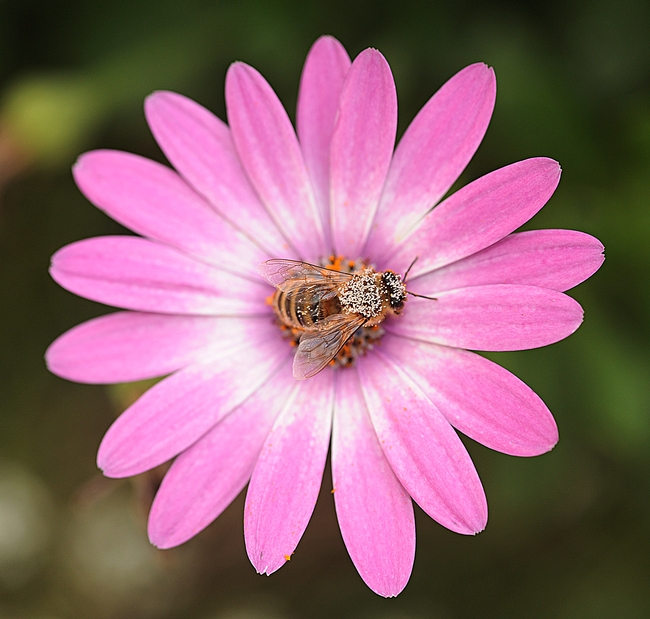


- Author: Kathy Keatley Garvey
The skipper wasn't skipping.
In fact, it wasn't doing much of anything.
The fiery skipper butterfly (Hylephila phyleus), tangled in a spider web, struggled furiously to free itself.
Not going to happen. The sticky substance stuck to her like super glue.
It's a scene you don't often see. This time, however, before the resident spider on the catmint could grab its prey, I released the skipper.
Sorry, spider. Gotta protect the pollinators.

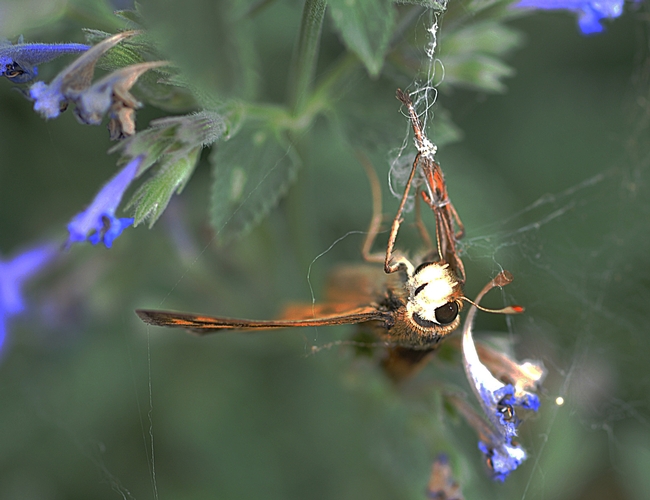
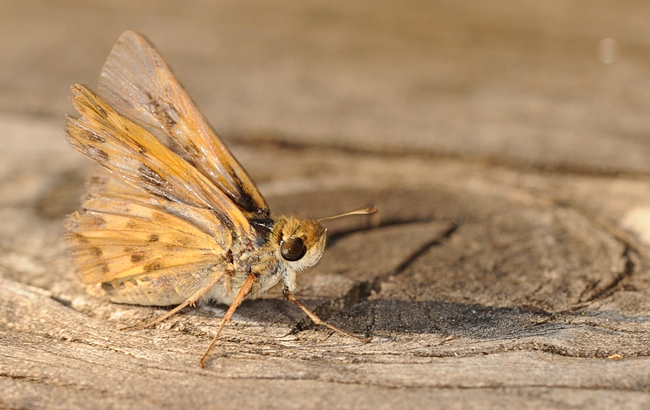
- Author: Kathy Keatley Garvey
Skippers and sedum. Sedum and skippers.
A perfect match. The flower, sedum (family Crassulaceae), and the fiery skipper butterfly (Hylephila phyleus, family Hesperlidae) make a stunning autumn photo.
When late afternoon sun strikes its fighter-jet wings, it glows brilliantly. Move closer and you'll see the skipper sipping nectaring. Move a little more closer and...it's gone.
It does keeps its distance.
Butterfly expert Art Shapiro, professor of evolution and ecology at UC Davis, provides comprehensive information on fiery skippers and other butterflies on his website, Art's Butterfly World.
He calls the fiery skipper "California's most urban butterfly, almost limited to places where people mow lawns. Its range extends to Argentina and Chile and it belongs to a large genus which is otherwise entirely Andean. Its North American range may be quite recent. Here in California, the oldest Bay Area record is only from 1937."
Only 1937? A newcomer, but what a beauty.

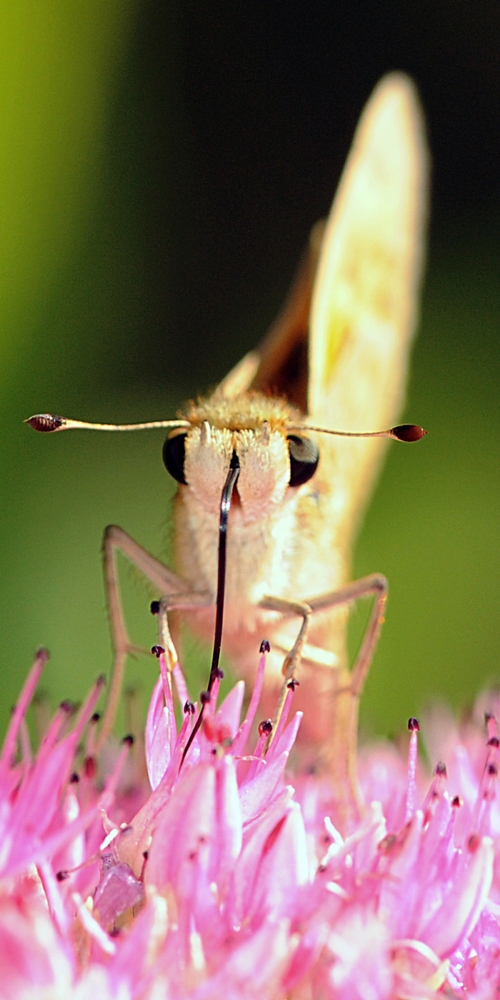
- Author: Kathy Keatley Garvey
Look for the fiery skipper (Hylephila phyleus) in your garden. It's likely sharing your catmint, lavender and sage with honey bees and other pollinators.
It's the only one holding a "fighter-jet" position.
Says UC Davis butterfly expert Arthur Shapiro: "The folded-wing skippers have a characteristic posture when they land: the forewings are held at a 45-degree angle to the rest of the body while the hindwing is held open and flat. This gives them a 'fighter-jet' like appearance."
These skippers are largely orange and tawny, he says, "and many have whitish chevrons on the ventral hindwing, although some genera are dark brown."
Skippers are a worldwide family of about 3500 species that appear to be "sister" to the rest of the "true butterflies," Shapiro says. The clubs on the tips of the antennae are usually hooked. In California, skippers fall into two or three subfamilies: the spread-wing skippers (Pyrginae), the folded-wing skippers (Hesperiinae), and the Heteropterinae.
His excellent Web site offers more information on fiery skippers and other butterflies.
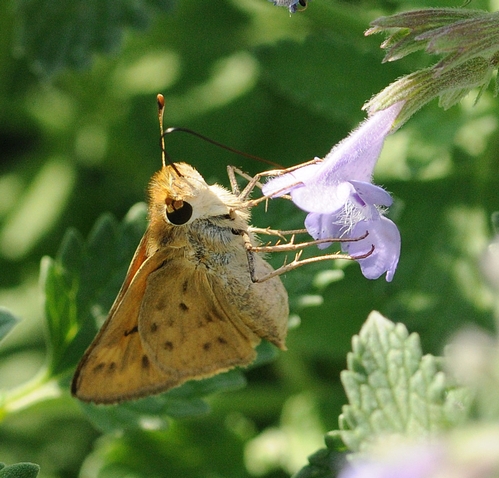

- Author: Kathy Keatley Garvey
Well, it's not really a Halloween butterfly, but it is orange.
The Fiery Skipper (Hylephila phyleus) visits us more than the politicians do at Election Time. Last Sunday we spotted four Skippers in our backyard. Only two politicians skipped to our front door.
The Fierry Skipper nectars our sage, adding a decidedly orange glow to the purple flowers.
UC Davis butterfly expert Arthur Shapiro says this one (below) is a male. It's California's "most urban" butterfly, he says, adding that it's almost limited to places where people mow lawns.
Its range extends to Argentina and Chile. The oldest Bay Area record of the Fiery Skipper dates back to 1937.
Its caterpillar hosts include Bermuda grass, crabgrass, St. Augustine grass and other grasses. Well, that counts us out. We have none of those, just a bee friendly garden. No lawn. No grass. No weeds. Just a big burst of flowers.
And Fiery Skippers.




